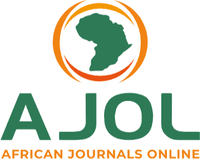ASSESSMENT OF MICROBIAL QUALITY AND SAFETY OF SOME SELECTED FISH PONDS IN YAMALTU/DEBA L.G.A OF GOMBE STATE
Keywords:
Water quality, safety, bacteria, fungi, fish pond, Yamaltu-DebaAbstract
Water quality entails the undesirable growth of microorganisms whose metabolic compounds
are easily detected by human nose or mouth, while its safety could be determine by the presence
of pathogenic microbes. This study aimed to analyze both the microbiological quality and
safety of water from some selected fish ponds in Yamaltu-Deba Local Government area of
Gombe State, Nigeria. Samples were aseptically collected using sterile sampling bottles,
subjected to isolation, Gram staining, biochemical tests, microscopic and macroscopic
identification using atlas. The bacterial strains isolated include Escherichia coli, Streptococcus
sp, Salmonella sp, Klebsiella sp and Enterobacter sp while the identified fungal isolates include
Aspergillus sp, Penicillum sp, Cladosporium sp, Fusarium sp and Mucor sp. E. coli was the
most predominant organism with 26.3% occurrence while Salmonella sp had the least (14.5%).
Streptococcus sp, Klebsiella sp and Enterobacter sp had occurrences of 15.8%, 23.7% and
19.7% respectively. However, Aspergillus sp had the highest incidence of 40.9%, then
Penicillum sp (32.7%), Cladosporium sp (14 %), Fusarium sp (6.5%) and finally Mucor sp
(4.9 %). The study revealed that the ponds were grossly contaminated with pathogenic
microorganisms which poses a risk to the health of the consumers and thus of significant public
health concern. The occurrence of Pseudomonas sp, Shigella sp, Salmonella sp and
Enterobacter sp in the pond water if not properly checked could endanger both the fish and the
ultimate consumers especially if the fish harvested from these farms are undercooked.





